Most people know that dogs can get sick and injured, but most don’t realize that dogs can also develop skin problems that need treatment. Skin conditions, such as rashes and allergies are very common these days. Skin problems can affect people and dogs because they can be caused by exposure to the environment and even chemicals. Dogs' skin problems aren't all that different from those of humans. While they don't have Rosacea or Psoriasis, they do develop allergies and skin infections, much as we do. Most owners love their dogs and want to take good care of them, but it is not always easy to spot signs of health issues. One major health problem that often goes undetected is the early onset of skin conditions. With this guide we would like to help you so that you can to be aware of symptoms and conditions that are common with dogs.
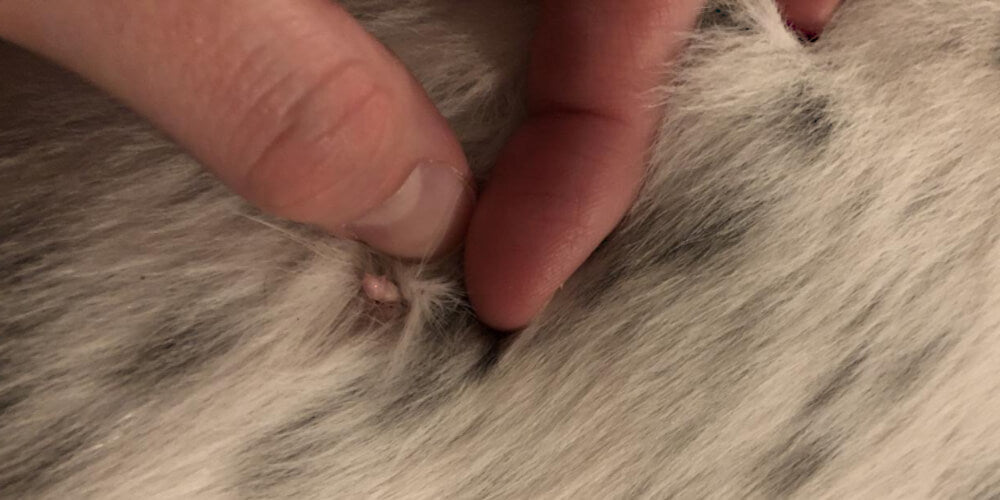
Dog skin tag
A dog skin tag is a small, benign growth on the skin that usually consists of skin cells hanging together around a piece of keratin. These slow-growing fibrous tissue growths are most common on older dogs and often appear on the dewlap (the loose, wrinkly skin around the neck), eyelids, ears and under the armpits. While these growths are easy to confuse with ticks, warts and cancerous growths, they do not pose any threat to your dog's health. You should still have them checked by a veterinarian to determine the cause. Once you know the reason for the growth, your vet can recommend the proper treatment - whether it be simple removal by your vet or a minor surgical procedure - depending on the size and location of the skin tag.
It’s important to mention that dog skin problems are most often easily noticed by touch or you can see them on the spot. However, to find these problems you need to work on your dog’s fur regularly. That’s why dog grooming at home is extremely important.
It allows us to periodically review the dog’s fur and skin. In addition, regular combing helps get rid of dead hair which can cause many skin conditions. All medium and long-haired dogs should have their undercoat removed regularly so that the skin can “breathe”. Excess hair and dirt can be removed and you can find any skin problems during grooming.
For the best results, we recommend our top grooming product: the RUBOLD Fur Perfection dematting tool for removing undercoats and to detangle. This special dog comb easily breaks even the most stubborn knots apart and cleans the fur from any dead hair. The secret is its unique, rounded teeth. It doesn’t scratch the skin which makes it the perfect choice for dogs with the most sensitive skin.
LEARN MORE ABOUT THE FUR PERFECTION
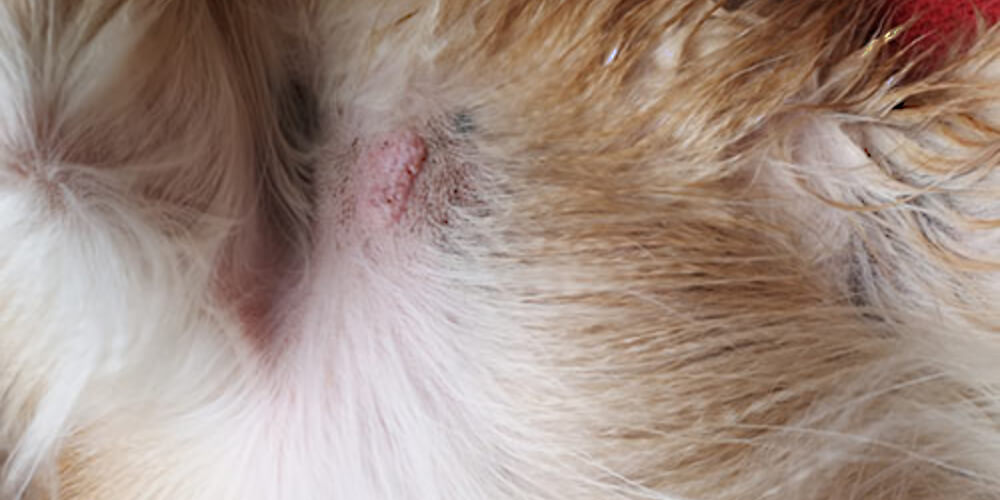
Dog skin cancer
A dog's skin is thinner than ours, which makes it more vulnerable to the effects of ultraviolet radiation from the sun as well as to minor skin trauma. Skin cancer in dogs — like any other type of cancer — can be fatal. Because it's so frequently found on the face, an overgrown or malignant tumor can cause blindness by obstructing a dog's vision. Other symptoms are just as worrisome, especially when they occur in other parts of your dog's body:
“When Lee was a puppy, skin cancer wasn't on my radar. It wasn't until a few months after he turned two that I noticed a small patch of skin on his ear was looking unusual. It wasn't red, it wasn't swollen, but it didn't look like the rest of his skin. I took him to the vet, and the diagnosis was skin cancer.”
The type of skin cancer - this owner mentioned in his story above - that grows on the ear of his dog is called a melanoma. Melanoma is the most common form of skin cancer in dogs. It tends to be malignant, meaning that if it's left untreated, it can spread to other parts of the body. Skin cancer is the most common form of cancer in dogs, and it can be completely cured if caught early. The first signs it is something serious is when a lump develops on or under the skin, often on the chest or back. If you notice a lump on your dog, get him to a veterinarian as quickly as possible!

Dry and itchy dog skin
Dry and flaky skin can be a dog's worst nightmare and an owner's as well. But if you suffer from dry and flaky skin, you'll know how uncomfortable it can be. Dogs can have dry and flaky skin as well. It can happen due to allergies, bacterial, fungal or yeast infections, seasonal changes may also bring these symptoms. What is dry skin? Skin dryness or xerosis is a common condition. It is characterized by the symptoms of tightness, scaling, flaking and itching. The most common causes of dry skin are: low humidity, detergents, frequent bathing or bathing with the wrong shampoo, low sebum production and other factors. Feeding your dog with high-quality food can solve this problem and sometimes it’s necessary to use fatty acid supplements to support their digestion. As an external solution use gentle and natural dog shampoo to moisturize your dog’s skin.
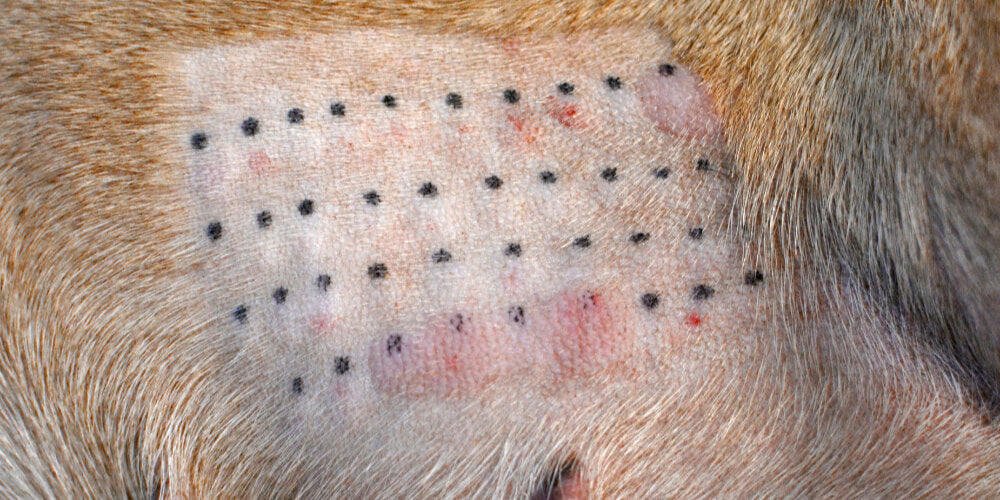
Dog skin allergies
When your dog comes down with an allergy, it can be difficult to know how to treat it. It's not exactly like you can ask your vet for the right medicine, after all. Fortunately, if you know what to do, you can make life a little easier for your furry best friend. With 10% of dogs estimated to suffer from allergies, it is no surprise that they are a common problem. Some breeds, such as the Golden Retriever, are more prone to allergies than others. Luckily, there are a number of ways to treat dog skin allergies, so there is no need to worry. In fact, if properly managed, your dog’s allergies can be managed, and your pet can lead a happy, healthy life. In most cases, you'll notice your dog's skin will develop red bumps that will then blister and turn into scales. These scales will bleed, leading to more itching and scratching. Scratching can lead to even more irritation and itching, which leads to the appearance of more scales, and the cycle will continue. The majority of dog skin allergies are caused by specific environmental elements and food. If your dog is constantly scratching, licking, and biting at his fur, and you know he’s not sick, he likely has an allergy. Dogs can have an allergic reaction to any number of things, from pollen to dust mites to non-natural grooming products and even your detergent. Allergies can be cured by Corticosteroids or by simply identifying and avoiding exposure to the actual allergens.

Dog skin infection
If your dog is scratching and licking, you might be able to stop the discomfort with a simple treatment. Skin parasites, allergies and yeast infections often cause itchy and inflamed skin in dogs. Bacteria, parasites and yeast infections are common causes of canine skin inflammation. When your dog's skin gets inflamed from some type of infection or irritation, the natural reaction is to scratch. The itching and scratching cycle can cause hair to fall out and skin sores to develop. Fortunately, many types of skin infections are easily treatable.
Dog skin yeast infection is caused by an overgrowth of a naturally occurring fungus, known as Malassezia. It occurs when the yeast naturally present on a dog's skin grows out of control, causing an infection. Common symptoms of skin yeast infection include red, itchy skin, dryness, flaking, and hair loss, and these can develop into secondary bacterial infections. If you suspect your dog is suffering from a yeast infection, you should try to confirm your suspicions by taking your dog to the vet. The vet can do a swab test to confirm that your dog has an infection, and prescribe the right treatment (medicated sprays, drugs or medicated shampoos)
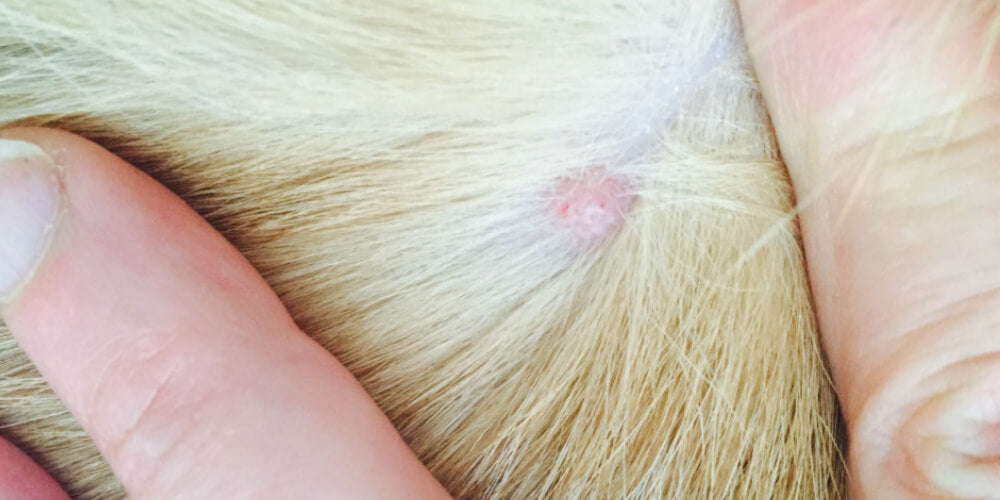
Dog skin bump
When you find a bump on your dog's skin, you might be tempted to squeeze it. But it's best not to touch the wart or other growth, because you can cause complications including infection. Instead, take your dog to the vet, who can remove the growth with safe and effective medication. While dog warts are usually benign, it's important to have a vet identify and treat them right away. If left untreated, warts can lead to more serious infections. If you're concerned about a change in your dog's skin, the first thing you should do is look at the whole dog to get a sense for what the problem might be. If there is a red, swollen area somewhere on your dog's skin, that could be a sign of ringworm, which is a common fungal infection in dogs that causes a circular, ring-shaped lesion. The most common places to find a ringworm on a dog are the ears, but it can also be found on the groin, tail, armpits, and feet. Your dog may have a bacterial infection if he has a yellow, pus-filled bump, and if you see a black dot in the center of the lesion.

Color or texture change in dog skin
If your dog's skin is changing color or texture, you may be worried about the cause. There can be a variety of reasons for this, from serious illnesses to benign conditions. Understanding the underlying cause is important in determining the most appropriate treatment for your dog. For example, if your dog has discolored skin from a parasitic infestation, it's not a good idea to simply pill your dog without first addressing the infestation. The change can also happen by hormone conditions or metabolic issues. As veterinary medicine continues to advance, we're able to offer more options in the treatment of illnesses, genetic conditions, and other issues affecting your dog. This is why it's important to bring your pet to your local veterinarian, who will be able to provide the best possible care based on the results of their initial. The examination can be done with a simple blood test.
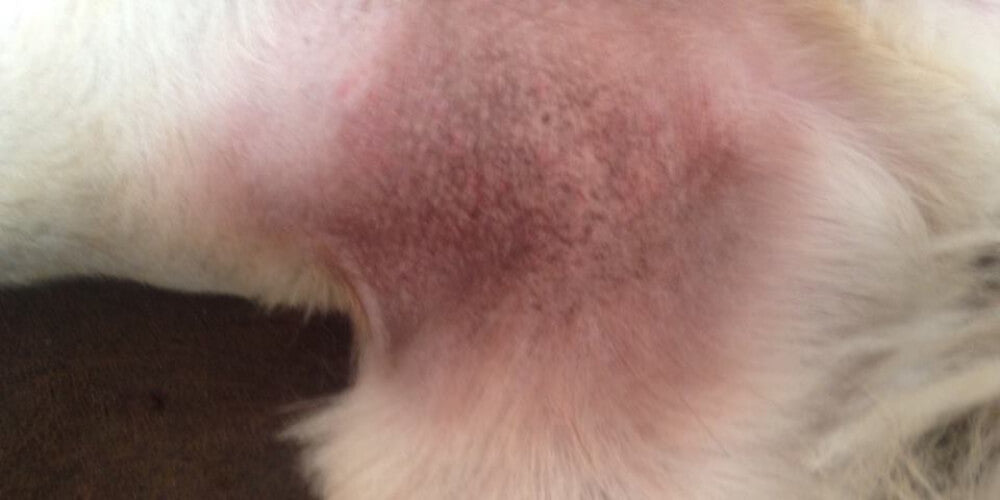
Dog skin rash
As if owning a dog wasn’t enough of a commitment, owners are always left wondering why their dog skin rashes occur. The reason is because dogs are exposed to a lot of different things on a daily basis. Some of the most common causes for dog skin rashes are allergies, atopy, parasites, or skin infections. Even though dogs have fur to protect them from the outside world, their skin is still very much exposed to the elements. Even a seemingly mild sunburn can be harmful to dogs because dogs don’t have the natural protection that humans have - their skin is very sensitive! Rashes are completely normal for dogs, and they happen for a variety of reasons. The common dog skin rashes from dry skin and allergies are common, but they are not dangerous. However, you should contact your vet if you suspect your dog might have mange or other skin problems.

Dog skin mites
It's not uncommon for dogs to have mites crawling around under the skin, but these skin mites in dogs can cause allergies and a number of other issues if left unchecked. The good news is that they're easy to treat, and the process can be as painless as using a topical medicated spray. What are dog skin mites? Dog skin mites are tiny parasites that live in the hair follicles of dogs. Adult mites are the size of the head of a pin, and their eggs are even tinier, often microscopic. The mites themselves are invisible to the naked eye, and serve an essential role in dog health and well-being. In fact, mites are present on all dogs, but only cause problems when their numbers get too high. When a dog becomes infested with mites, there is usually a lot of itching involved, as the mites feed on the dog's skin cells and blood. It’s important to take action if you notice signs that your dog is battling a mange infestation, as this can cause a variety of health problems for your pet. Demodectic mange is not contagious between animals or people but can cause hair loss or hot spots.

Fleas and ticks on dog skin
All dogs are susceptible to fleas and ticks, and while most dogs have no problem with a few fleas, ticks are another story. Ticks and fleas are arthropods, which means they have a hard outer skeleton, called an exoskeleton, that they need to shed in order to grow. They are carnivores and will feed on the blood of their host in order to grow and survive. It is important to remember that not all ticks are the same. There are over 2000 species of ticks on planet earth. There are hundreds of species in the United States alone, and only 10 species are known to actually feed on humans. Ticks and fleas are most commonly associated with dogs. While they can certainly affect other animals, these bloodsuckers prefer to live on canines. The problem is that ticks and fleas not only live on dogs, but they also bite them. Ticks and fleas can cause a variety of illnesses in dogs, all of them very serious. Fortunately, there are a number of ways to protect your pup against these tiny pests. To prevent an infestation, start by treating your dog and his bedding with monthly flea preventative, which can be found at any pet store.
When do you have to visit the VET with dog skin conditions?
You probably don’t need to rush your dog to the veterinarian every time he has a skin issue, but there’s no harm in having your dog examined by a vet if you’re unsure. And while you’re at it, have your vet check your dog for signs of a more serious underlying condition. For example, a dog with a simple skin condition involving red, flaky patches of skin may also be suffering from a serious internal disease. Watch out for any of the symptoms mentioned in this article above: shedding, hair loss, hot spots, change on texture or color of the skin.
Also, don’t forget to comb your dog’s hair regularly to get rid of the dead hair, which can be a source of many skin diseases. Use the best undercoat removal comb to groom your dog’s coat fast and painlessly.